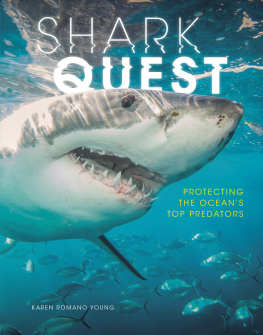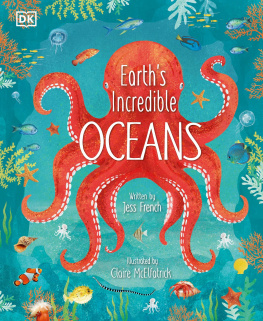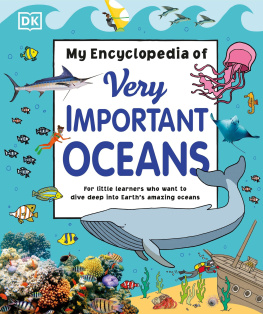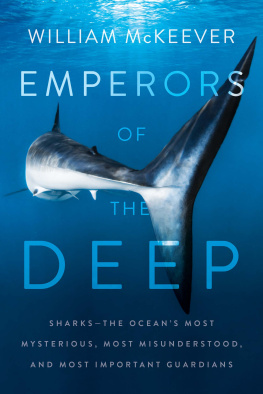For Simon Levitas and Steve Whittle
How to Snog a Hagfish!
For Simon Levitas and Steve Whittle
By the same author: Dont Shoot the Albatross! Nautical Myths and Superstitions
Published by Adlard Coles Nautical
An imprint of Bloomsbury Publishing Plc
50 Bedford Square, London WC1B 3DP
www.adlardcoles.com
Copyright Jonathan Eyers 2012
First edition published 2012
ISBN (print): 978-1-4081-4042-0
ISBN (ePub): 978-1-4081-5935-4
ISBN (ePDF): 978-1-4081-4061-1
All rights reserved. No part of this publication may be reproduced in any form or by any means graphic, electronic or mechanical, including photocopying, recording, taping or information storage and retrieval systems without prior permission in writing of the publishers.
The right of the author to be identified as the author of this work has been asserted by him in accordance with the Copyright, Designs and Patents Act, 1988.
A CIP catalogue record for this book is available from the British Library.
Note: while all reasonable care has been taken in the publication of this book, the publisher takes no responsibility for the use of the methods or products described in the book.
CONTENTS

Most of the images in this book are reproduced with the kind permission of the National Oceanic and Atmospheric Administration (NOAA). You can learn more about their mission (and see more photos from their library) on their website: www.noaa.gov
Images credited to individual photographers are used under the Creative Commons license: http://creativecommons.org/licenses/by/3.0
Eric Charlton: 67; Getty Images: 45; Rex Features: 6.
Note: To the best of the publishers knowledge, unless specified otherwise all the images herein are public domain and have been designated as such by the copyright holder. Should an image have been used without being credited to the proper copyright holder the publisher is happy to amend this for any future reprinting.
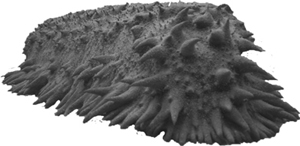
Introduction
Beneath the Surface...
For many people, seasickness is the most unpleasant thing that happens to them at sea. Beneath the surface of the sea, however, is a whole other world, a lot of which could turn all but the strongest stomachs.
But disgust is actually pretty irrational, when you think about it. Someone who is disgusted when they see a dead bird lying by the side of the road can perfectly happily drive home and eat another dead bird for dinner.
Once upon a time, before the days of best before or use by dates, we relied on our own senses to tell us when food was good to eat. Disgust is a primitive defence mechanism designed to make us avoid bad food before we put it in our mouths or to vomit it back up if its already too late.
Feelings of disgust come from the primal part of the brain that warns us of danger, even when the logical side of our brain tells us theres nothing to be worried about. In this way, disgust is nowadays about as rational as any other phobia.
You probably wouldnt want to eat many of the species featured in How to Snog a Hagfish!, but plenty of people around the world do! Reading this book might not make you want to join them, but understanding how and why these amazing creatures have developed the way they have may make them seem just a little less disgusting. Or of course it may not.

Chapter 1
Looks Arent Everything
If you are a fish the size of a pencil in an ocean full of sharks the size of trucks, you probably shouldnt expect to die of old age. If you are lucky, you were born with the ability to defend yourself, preferably with poison (see ). If you are unlucky, you might have to rely on your appearance, and hope other creatures in the sea think you look distinctly unappetising.
Many people consider the Blobfish to be the ugliest creature in the sea. Indeed, Blobfish is an appropriate name for an animal that consists mainly of a jellylike substance. It has hardly any muscles and cant really swim. Instead, it just floats about wherever the currents take it, buoyed up by its jelly body, which has a similar density to seawater. Of course, not being able to swim very far, it cant hunt for food either. So it just eats whatever drifts past, from small molluscs to smaller fish. Fortunately for the Blobfish, just floating about doesnt use up much energy, so it doesnt need to eat much either.
Living off the coast of Australia at depths of about 2,600ft (800m), the Blobfish is rarely seen by humans. When caught in a fishing net and brought to the surface, the Blobfish quickly dries out in the air and pops. It makes quite a mess. But perhaps the real reason we find it so disgusting is because, looking at it head on, the Blobfish bears more than a passing resemblance to a very ugly (and miserable) human face.

Fish out of water in the air this Blobfish is drying out and its skin has begun to rupture (Photo: Claf Hong)
The American Anglerfish isnt nicknamed the All-mouth without good reason it has one of the smallest mouth-to-body ratios of any fish, with its mouth being at least twice as wide as its tail. Living at depths of up to 3,300ft (1,000m), as some Anglerfish do, you need a big mouth to take big bites. Just ask the Umbrella Mouth Gulper Eel (see ). Food can often be scarce, and fish that nibble slowly at their dinner risk losing the meal (and maybe their own lives) to scavenging predators that can swallow things whole.
Some types of Anglerfish have a light-up lure to attract their prey (you can read more about fish that go fishing on ). Some of the larger types that can grow to 5ft (1.5m) visit the surface if they get hungry, and will grab seabirds that are floating there, taking a breather from flying. Many people probably wouldnt eat an Atlantic Anglerfish if it was served up whole, but a lot of people do in fact eat it and love it, because by the time it is filleted, sliced up and shipped to supermarkets it is called Monkfish or Goosefish instead.
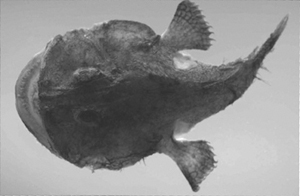
Smile for the camera no need to ask why the Monkfish is sometimes called the All-mouth (Photo: NOAA)
The Stomiids also live in the murky depths, with various members of the family living 2505,000ft (76.21,524m) down. With common names like Dragonfish and Viperfish, what makes the Stomiids so off-putting are their spectacular teeth. Their jaws would surely be enough to make even a shark think twice (though not all sharks are renowned for their intellect). The Dragonfish has a mouthful of fangs that are as sharp as a knife, and if that isnt enough, it also has teeth on its tongue. The Viperfish has barbed bottom teeth so long they cant fit in its mouth, and it needs to use its own backbone as a sort of shock absorber to cushion the impact when it snaps its jaws shut on some unsuspecting prey.
Next page


